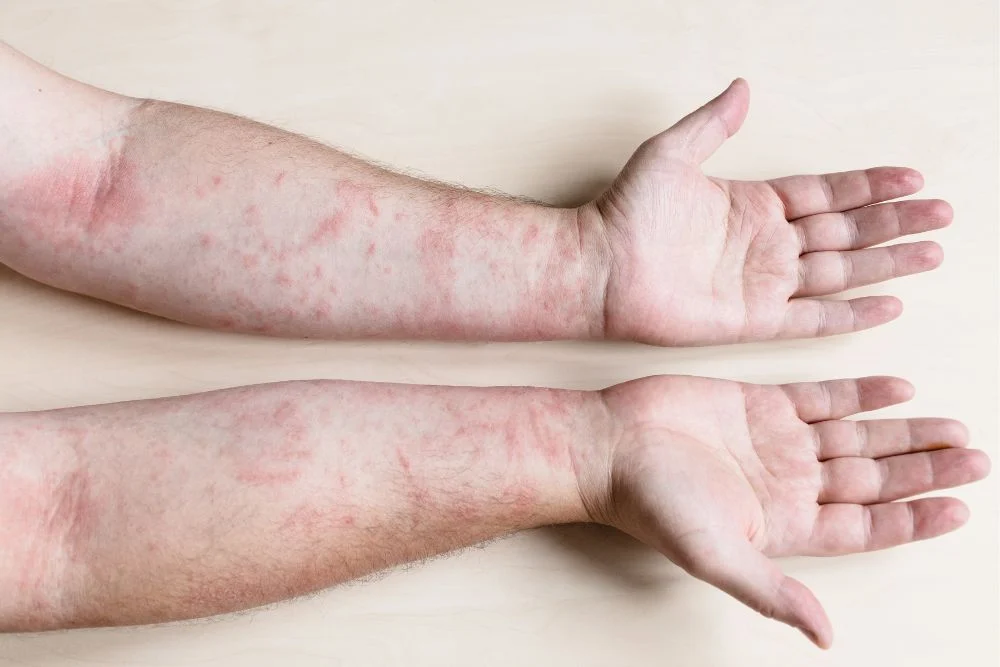By Desmond Nleya
The UAE’s scorching climate can be relentless, and while air conditioning helps, many still wake up with an irritating skin condition known as bed heat rash. This condition, common in hot and humid environments, causes discomfort, sleeplessness, and sometimes infection if left untreated. Understanding what causes it, how to prevent it, and how to treat it can save you from those sleepless, itchy nights.
What is Bed Heat Rash?
Bed heat rash, medically known as miliaria, occurs when sweat glands become blocked, trapping sweat under the skin. This leads to red, itchy bumps or blisters, commonly appearing on the back, neck, chest, and thighs—areas often in contact with bedding. In the UAE, high summer temperatures combined with thick bedding and night-time sweating make this condition more common.
Causes in the UAE Context
High Bedroom Temperatures – Even with air conditioning, some rooms trap heat, particularly if ventilation is poor.
Heavy or Non-Breathable Bedding – Thick blankets, polyester sheets, and non-cotton pillowcases can prevent airflow, increasing sweat.
Night Sweating – Many experience excessive sweating at night due to dehydration, hot weather, or underlying conditions.
Tight Nightwear – Non-breathable fabrics and tight sleepwear worsen the risk.
Symptoms to Look Out For
Small red bumps or clear blisters
Itching or a prickly, burning sensation
Mild swelling or irritation in affected areas
Discomfort that worsens at night or after sleep
Prevention Tips for UAE Residents
Optimize Room Temperature
Keep your air conditioning at 22–24°C for comfortable sleep.
Use fans for better air circulation.
Choose the Right Bedding
Use lightweight, breathable cotton sheets instead of synthetic materials.
Avoid heavy duvets during summer months; instead, use a thin cotton blanket.
Wear Breathable Nightwear
Go for loose, moisture-wicking cotton pajamas.
Avoid tight clothing that traps heat around the chest, back, and waist.
Shower Before Bed
A cool shower before sleep reduces body temperature and clears sweat glands.
Stay Hydrated
Drink enough water throughout the day; dehydration worsens body heat retention.
Consider Antiperspirant Solutions
For those prone to heavy night sweating, a mild clinical antiperspirant (for body use) may help, but consult a dermatologist first.
Treatment & Relief
Cool Compress
Apply a cool, damp cloth to the affected area for 10–15 minutes to reduce inflammation and itching.
Over-the-Counter Creams
Use calamine lotion, hydrocortisone cream (for severe itching), or an antihistamine lotion to soothe irritation.
Keep the Skin Dry
Pat the skin dry after sweating; avoid harsh rubbing.
Avoid Heavy Ointments
Thick petroleum-based creams may worsen blockage of sweat ducts.
Seek Medical Advice
If a rash persists beyond 4–5 days, becomes painful, or shows signs of infection (pus, fever), consult a dermatologist.
Bottom Line
In the UAE, where heat and humidity are a constant battle, preventing bed heat rash is mostly about controlling your sleeping environment and keeping the skin cool and dry. With simple steps like adjusting bedding, choosing breathable fabrics, and using soothing treatments, you can enjoy uninterrupted, itch-free sleep—even in the summer heat.


